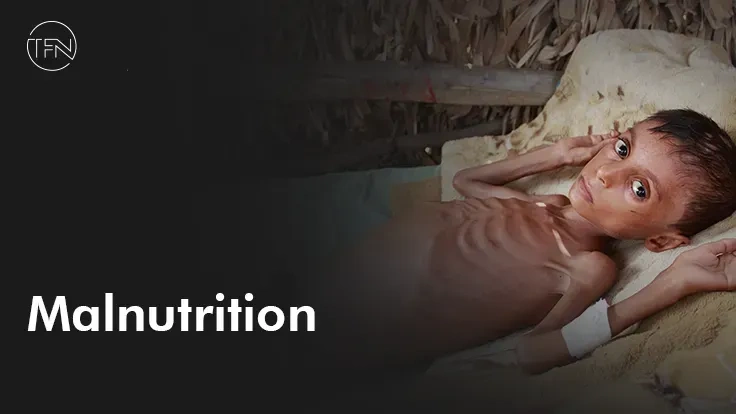
According to the World Health Organization, malnutrition kills more people each year than AIDS, malaria, and tuberculosis combined. This post will examine the definition of malnutrition and its various causes. We will also address some preventative steps to help protect your loved ones from this debilitating disease, as well as how to recognize and treat malnutrition in children.
Malnutrition Definition
Malnutrition is when the body lacks the nutrients it needs to operate effectively. Malnutrition can have numerous causes, but the most frequent are inadequate food intake and food intake restrictions brought on by illness or injury.
Malnutrition types
Acute, chronic, and sub-acute malnutrition are the three different forms. A brief absence of meals is typically the cause of acute malnutrition. Protracted duration of insufficient food intake results in chronic malnutrition. The most severe type of malnutrition, sub-acute malnutrition, is brought on by sickness or infection that impairs the body's capacity to absorb nutrients from the diet.
Malnutrition's causes
When the body does not receive enough nutrients, it suffers from malnutrition, which causes an imbalance in the cells and organs of the body. Malnutrition can have a wide range of reasons, and each one of those causes can have its own unique set of symptoms. Here are the top five reasons for malnutrition:
1) Lack of food: Malnutrition is most likely caused by not consuming enough calories or nutrients from food, which is probably the most frequent cause of malnutrition. Malnourished individuals may be underweight or have a weak appetite, and it's possible that their systems can't properly assimilate the nutrients they do receive.
2) Inadequate intake of certain nutrients: If you don't get enough of certain vitamins and minerals, your body will find it difficult to function normally. For instance, an underweight person can have low iron or vitamin A levels, which can cause issues like anemia or weariness.
3) Poor food quality: Not all foods are equal; some are more nutrient-dense than others. For instance, your body won't be able to develop muscle or recover from workouts effectively if you don't consume enough high-quality protein.
4) Disease: Because they limit how much food a person can eat, some diseases, such as celiac disease or Crohn's disease, can result in malnutrition.
5) Illness: Malaria, typhoid fever, and tuberculosis are just a few illnesses that can result in severe malnutrition.
Signs of Undernutrition
Malnutrition can cause a variety of symptoms, and some people may not experience any at all. The severity of the symptoms can range from mild to severe. Following are a few typical signs of malnutrition:
- Eating less than is advised for your weight
- Lack of vigor
- Poor blood flow
- Loss of weight
- Dried skin
- Fine hair
- Eye and skin fading to yellow
- Bone density decline
Taking care of malnutrition
When the body does not receive the proper amount of nutrients, malnutrition can develop. It may result from a lack of food, hydration, or illness. Malnutrition can be treated in several ways, but it typically requires medical assistance.
Malnutrition prevention
One in eight people worldwide suffers from malnutrition, a hazard to public health. It results from insufficient intake of vital nutrients, which might hurt growth, development, and health. Chronic illnesses like HIV and tuberculosis can be brought on by malnutrition. Malnutrition also raises the risk of dying from a variety of causes.
Malnutrition is described by the World Health Organization (WHO) as an energy balance problem brought on by insufficient food consumption or poor nutrient absorption. According to the etiology, it can be divided into three categories: metabolic, infectious, and environmental.
The most prevalent type of malnutrition, metabolic malnutrition, is brought on by issues with the body's absorption or utilization of nutrients from the diet. These issues may result from lifestyle, environmental, or genetic causes. Examples include:
- A poor income.
- An inability to digest food properly.
- A lack of access to adequate water or sanitary services.
A person has infectious malnutrition when they cannot fight off an illness because of a deficiency in immunity or infection-causing microorganisms in their stomach. Serious side effects like vomiting, fever, and diarrhea may result from this. Infectious malnutrition can also result from environmental exposures, such as exposure to hazardous substances or harsh weather.

